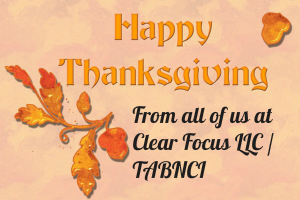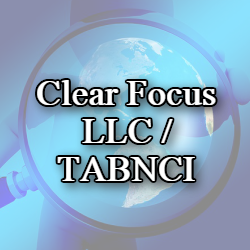
Successful Leaders Understand and Use DISC
When you are a leader in a company, the biggest job you have is communicating well with your staff and facilitating a good environment in which the staff can communicate to one another.
In order to boost communication levels, you must understand your own personality as well as the others you work with. Personality traits play a key role in how we express ourselves and understand the way others express themselves to us. It is only natural to think everyone has the same thought processes that you have and understand things the same way that you do. On the contrary, each of us have a different way of communicating and understanding what is being said to us by those around us. With the use of a DISC profile assessment, you can understand your behavioral style and how to best interact with others that have a different behavioral style.
Why Take a DISC Profile Assessment
DISC stands for four different characteristic traits: dominance, influence, steadiness, and compliance. DISC is the “HOW” we do things…. Not WHY. How we walk, talk, react, communicate, etc… Not everyone who is similar in these assessments are identical. Your personality has been shaped by a number of factors, whether it be experiences, environment, and belief systems to name a few. No two people will express themselves the same.
Understanding yourself more in depth will help you to be more self-aware. When you take the time to know yourself better, you will inevitably be able to know others better.
How Does DISC Play an Important Role in Good Leadership
Self-awareness plays a key role in being a good manager. DISC assessments help you to take a deeper look at your own personality and communication style. Not only that, in these assessments, you will be given the skills necessary to know how to tailor your communication styles with others that exhibit different personality traits. When you understand how your style of communication is coming across to your employees, you will be able to adjust your actions based off of who you are relating to.
Successful Leaders Understand and Use DISC
With these types of resources available, it is important for leaders to use them to their advantage. To be successful in your business, you have to master the art of relating to other people, no matter how much your personality conflicts with theirs. As a good leader, you need to understand how to encourage your staff to work better while keeping misunderstandings to a minimum. Through utilizing a DISC profile assessment, it takes the guesswork out of how to best communicate and relate to others in your business.
No matter what form of business you run, successful leadership starts with understanding your staff. Until you know them and how to relate to them, you will not communicate as well as you need to. By administering DISC assessments, you will give yourself and your business the foundation needed to build a strong corporation.
Contact us today to try our DISC assessment for free! You will quickly realize their power & significance.
Your comments are greatly appreciated. Please let us know how we are doing!
Gary Brunson
gary@myclearfocus.com
Debra Rider
debra@myclearfocus.com
574.361.2674
Sustainable Growth & Profit Consultant, Coach, Mentor and Counselor/Therapist for Business Owners and Professional.
Written for us by our associate Gary Sorrell, Sorrell Associates, LLC. All rights reserved worldwide.
Improve Your Recruiting Processes
Acquiring top talent is difficult and yet so crucial to your business’ success.
Technology has advanced the recruitment process and coupled with an element of human interaction, better candidates can be secured.
Today, there is an abundance of technological recruiting and assessment options. However, companies are not able to measure the long-term impact of these hiring advances as well as you’d think. They struggle to pinpoint the real impact of quality hires and how long they stay.
Hiring managers expect more out of their candidates, especially after they’ve been given assessments and the tools necessary to reveal whether they are the right person for the position. They want to enhance the process in order to attract and then secure better employees.
Acquisitions are important, time-consuming, and potentially costly during the recruitment process.
Ever wondered how this process could improve? It’s a common question amongst hiring managers and HR departments. The more the system is fine-tuned the better for all involved.
Recently there was a survey of 200 hiring managers that revealed some interesting results.
- The hiring managers that responded said they wanted to see the recruitment process improved by their HR department.
- They reported the desire for a more data-driven process when given the task to hire top candidates.
Recruitment Process
Larger organizations often consist of hiring managers that are frustrated by the challenges associated with recruitment. The survey revealed that they feel like HR should improve the process by utilizing different recruitment tactics.
Data-Driven Process
Hiring managers want to pursue top talent and believe the process should be data-driven. They want candidates to complete assessments and take the information gathered for consideration during the hiring process. Talent acquisition based on facts and data will ensure a better candidate and most likely a longer term employee.
Hiring managers rely on HR to set an acquisition system in place. When they don’t consider best practices and stick to the old way of doing things, they hurt their team and the ability to secure the most talented candidates for open positions. Further, data is a useful tool that will enable a more well-rounded decision to be made when selecting a candidate.
Consider these things and bring them up for discussion as a team in order to create a more seamless recruitment process for your company. Working together as a team will ensure you acquire better candidates while improving employee morale and your bottom line over time.
Need help before your interview? Call us today!
Gary Brunson
gary@myclearfocus.com
Debra Rider
debra@myclearfocus.com
574.361.2674
Sustainable Growth & Profit Consultant, Coach, Mentor and Counselor/Therapist for Business Owners and Professional.
Written for us by our associate Gary Sorrell, Sorrell Associates, LLC. All rights reserved worldwide.
How Managers Should Engage New Hires
The first 90 days for employees are crucial to their future success within the company.
While they are nervous and a little green, management needs to swoop in to ensure their first impression is a positive one.
Managers should attempt to alleviate fears and make the new employee feel comfortable in their new position. If they pull this off, then the employee will stick around for the long haul which will help improve your bottom line and employee morale.
Engagement Is Essential
Brand new employees tend to be more engaged because they are trying to put their best foot forward and learn the ropes. They are (at this point) still excited about their new position and the company.
Statistics show that 82% of new hires are more engaged in the first year while other employee’s engagement is closer to 75%.
Managers have the ability to enhance their new hire’s experience as they learn their role. In fact, their effort has a direct correlation on the level of results and success the new hire will bring the company.
Management is able to help facilitate better retention of employees. Here are four strategies that will help increase your new hire retention.
Get Social
We live in a social world where people want to feel connected. New jobs are more enjoyable and less stressful if managers will include new hires in staff lunches and activities.
Be sure to introduce them to the entire team. “Sometimes you want to go, where everybody knows their name.” Get social and you’ll retain more team members.
Career Development
Chat with your new hire about their career goals. Help them envision their future with your company while validating and encouraging their desire to grow.
These conversations are critical and enable the employee to envision their growth potential. Further, managers should clearly outline when these goals will be revisited and discussed in order to track success.
Don’t Neglect Training
New hires will appreciate a well-designed training plan. Often, they are thrown into their position, with little training, and flounder about aimlessly. Talk about frustrating and a surefire way to lose them. If you train them, they will stay and make fewer mistakes in the long run.
Survey New Employees
Ask your new hire to complete a confidential survey within the first 12 months of employment. Find out how you are doing as a manager and company, as a whole, by simply going right to the source for the information.
Managers that engage their new hires are able to retain them and ensure their success for the company. Employees with proper training and encouragement will stay longer and be more equipped to achieve the results you want for your business.
Need help getting your new hires to continue to be top performers? Contact us today!
Gary Brunson
gary@myclearfocus.com
Debra Rider
debra@myclearfocus.com
574.361.2674
Sustainable Growth & Profit Consultant, Coach, Mentor and Counselor/Therapist for Business Owners and Professional.
Written for us by our associate Gary Sorrell, Sorrell Associates, LLC. All rights reserved worldwide.
Reasons to Hire an Employee with Grit
High turnover is expensive, time-consuming, and frustrating.
Companies worldwide seek to avoid this issue because it hurts employee morale, job performance, and employee engagement. Most managers notice a decrease in staff productivity which negatively impacts business.
Since we know that turnover is detrimental to our business, hiring managers should make thoughtful decisions about recruitment. Grit is the one distinguishing factor to be considered when selecting your next new hire.
Grit is an HR term that’s best described as a candidate with the ability to channel their passion, energy and drive for the long haul in a sustainable way. During the recruitment phase, hiring managers must choose whether they want the brightest candidate or the one with the most enthusiasm.
Your best bet is to find a candidate that possesses both qualities. Employees with grit have real staying power with the ability to pull off outstanding results.
The following will explain why recruiters find gritty employees the best options for recruitment.
Failure Is Not an Option
Who doesn’t want their business to succeed? Managers must recruit zealous candidates with the goal to push the limits in order to ensure success. These new hires will fear failure and not allow themselves to fall short of the goal. Their grit will make all the difference.
Get Staff Onboard
Gritty employees won’t settle for second best. They set goals and then achieve them. You’ll want to get them completely onboard with your mission and vision. Most HR managers see the value of getting new staff to believe in the company’s culture and goals. The first quarter is crucial to an employee building relationships and having buy-in to the company as a whole.
How to Identify Grit While Recruiting
During the recruitment process, you’ll want to look for the signs of a gritty candidate. Be sure to ask pertinent questions and figure out their approach to work.
Try the following:
- Provide scenarios and questions that will reveal their style in the workplace.
- Ask questions about how they would handle obstacles.
- Probe a bit to figure out their goals for the future.
- Request information on their past projects and experiences.
- Find out about their achievements and how they feel about accomplishments.
- Ask them to take a personality assessment test to learn more about them.
While recruiting, you can do your “homework” on your candidate to gauge how gritty they will be for the company. An employee with passion and drive for the long haul is an outstanding find. #
We would love to hear your comments. Please comment below or contact us today!
Gary Brunson
gary@myclearfocus.com
Debra Rider
debra@myclearfocus.com
574.361.2674
Sustainable Growth & Profit Consultant, Coach, Mentor and Counselor/Therapist for Business Owners and Professional.
Written for us by our associate Gary Sorrell, Sorrell Associates, LLC. All rights reserved worldwide.
Corporate Learning Will Be Transformed and Will Take On More Importance
It’s time we take a look at the changing world around us.

Corporations are coming face to face with being in need of running their businesses differently. If you do not make the transformations needed, you will face difficult financial times.
It is best for you to understand that technology and the internet have opened doors for people that have never been opened before. These developments already have impacted your company and will continue to do so.
In order to be successful doing business in the future, you will need to make certain your staff is properly trained. Not only that they are trained but how you train your staff needs to be addressed. Corporate learning will take on a more important role. It is vital that your team have the training needed to keep up with the changes.
Focus on Building a Complete Learning Experience
Using the internet to your advantage will help you to build a complete learning experience for your team. It is important that you focus on creating a learning environment. Here are some things you should do to make this happen.
- Face to face learning– there is always a place for sit down learning time. Whether this is in the form of a speaker or one on one meetings, you should have an occasional face to face learning opportunities.
- Videos– many people are putting together educational and motivational videos that will teach your staff concepts you want them to have. These forms of learning will give your team the flexibility they need to schedule a time to watch the videos.
- Online courses– people that are just hitting the job market from college are accustomed to online courses. There is a convenience in this type of education as well as familiarity.
- Reliable blogs– there is a wealth of free reading material out there that you can point your employees to. Just be sure you are giving them websites that are written by those that are authorities in the field.
- Job rotations– to really understand a company and grow in skills, some companies are focusing on job rotations. They bring in untrained individuals and then train them from the ground up. After 6-8 months of working in one area, they are moved to another area of the company to learn that end of things. This makes for well-rounded employees. Not only that, it keeps them feeling fresh in the job.
The many different ways you can teach your staff will continue to grow. If you want to stay relevant to the workforce as well as your customers, you will need to focus on training your staff. #
We would love to hear your comments. Please comment below or contact us today!
Gary Brunson
gary@myclearfocus.com
Debra Rider
debra@myclearfocus.com
574.361.2674
Sustainable Growth & Profit Consultant, Coach, Mentor and Counselor/Therapist for Business Owners and Professional.
Written for us by our associate Gary Sorrell, Sorrell Associates, LLC. All rights reserved worldwide.
How To Scale Complex Selling Strategies With Sales Integration
Sales teams face a variety of daily challenges.

However, one that really deters their goals to beat their quotas is the sheer volume of systems that they have to use. In order to be successful, you’ll need to analyze data and set priorities based on what you learn.
When sales teams have to visit multiple sources to obtain this necessary info, their task becomes quite daunting. It takes time while sales and closing ratios slow down. Therefore, sales integration is essential in order to enhance sales cycles and improve closing.
Sales Integration Makes Things Simpler
Companies with long sales cycles and numerous decision makers need help with simplifying their processes. Customization of products and services tends to warrant sales integration which helps companies increase their win rates and save time.
If you integrate your company’s pricing and value systems with customer service management, price and quote (CPQ) and marketing automation, then you’ll find greater success is on the horizon.
There are a number of sales integration options and approaches that can be taken. Consider these three to help scale complex selling strategies:
1. Automation
Your company can accelerate sales cycles by automating the proposal and quote process in real time. In fact, you can integrate your CPQ and ordering systems quite simply. Companies are training their sales teams to use mobile apps in order to increase their sales.
The apps help the teams to provide quotes, respond quickly, and handle price questions. The more integration of CPQ, the faster the quotes are provided. These companies claim the proposal cycle is reduced from over 15 hours to 30 minutes.
2. Accuracy
Companies were able to increase the accuracy of quotes because the most current pricing and services were available due to integration. You will get the benefit of only focusing on the most profitable products for your business. Companies see a major reduction in order sales cycles because there are fewer inaccurate quotes.
3. Higher Win Rates
Integration allows your company to increase their win rates. Customers get more accurate quotes and in a timely fashion. Your sales teams are more efficient and able to focus on new business while keeping their current customers pleased.
Integration is essential in order to fine tune your systems and drive up sales. Your customers and sales teams will appreciate this new strategy. Results will pour in immediately after implementation and you’ll spend more time on what matters rather than spinning your wheels on things that take away from sales. #
We would love to hear your comments. Please comment below or contact us today!
Gary Brunson
gary@myclearfocus.com
Debra Rider
debra@myclearfocus.com
574.361.2674
Sustainable Growth & Profit Consultant, Coach, Mentor and Counselor/Therapist for Business Owners and Professional.
Written for us by our associate Gary Sorrell, Sorrell Associates, LLC. All rights reserved worldwide.
10 Ways To Welcome Your New Recruit
 A brand new hire joining your team is quite the accomplishment. After countless hours of recruiting, you’ve made it to their start date. It’s time to roll out the red carpet a bit and make them feel welcome.
A brand new hire joining your team is quite the accomplishment. After countless hours of recruiting, you’ve made it to their start date. It’s time to roll out the red carpet a bit and make them feel welcome.
Don’t miss this important aspect of training your new hire because you want them to stick around, work hard and believe in your company as a whole.
Try to do these 10 things to make their first week exceptional:
1. Think coffee
Coffee is an easy and cheap way to give someone a treat. Go to a local coffee shop and spend some time getting to know them and break the ice a bit.
2. Welcome Email
Make your team and new hire feel comfortable and informed by sending out a welcome email to introduce the new staff member. Be sure to include the newbie’s email and phone extension, encouraging others to reach out and say hello.
3. In Person Intros
Introduce your new hire to management and people they will work directly with that first week. This will alleviate fear and get those relationships started quickly.
4. Socialize
Organize a social event the first week so that your new hire gets to feel a part of the team early. Plus, this gives other employees a break from the mundane and the chance to do something fun together.
5. Tour the Facility
Save time for your new employee and give them a tour of your building so they know where the restroom, break room and social spaces are located.
6. Business Cards
Try to order their business cards and personal stationary in advance. This extra special touch will be seen as thoughtful and will be appreciated.
7. Business Update
Your team should give a synopsis on their projects and the overall market situation for your business. The new hire will then be able to jump in and have a solid overview about current conditions.
8. Clear Expectations
Give your new hire a clear list of expectations. They want to know the hours they should work, when to go to lunch and who to call if they are sick. Clarity will help a new employee understand what and how you want things done.
9. Daily, Weekly, Monthly Goals
The first week of employment should be a time where you explain the daily, weekly and monthly goals to your new team member. Think of it like a roadmap in order to help them succeed in their role.
10. Recap Meeting
After the first week, meet with your new employee on how it all went. Invite them to do a little Q & A session with you so that they are comfortable and on the right track.
Make your new hire’s first week awesome! You’ve hired well so the next step is to train them right and get them adjusted to their role quickly, which benefits everyone. #
We would love to hear your comments. Please comment below or contact us today!
Gary Brunson
gary@myclearfocus.com
Debra Rider
debra@myclearfocus.com
574.361.2674
Sustainable Growth & Profit Consultant, Coach, Mentor and Counselor/Therapist for Business Owners and Professional.
Written for us by our associate Gary Sorrell, Sorrell Associates, LLC. All rights reserved worldwide.
How CEOs Handle Their Power
Emotional Intelligence
 CEOs typically put in countless hours to prepare for this important company role. They tend to learn how to be a leader during their stay in middle management. Often, these managers make mistakes such as being overbearing, micromanaging, and forgetting to invest in people on occasion.
CEOs typically put in countless hours to prepare for this important company role. They tend to learn how to be a leader during their stay in middle management. Often, these managers make mistakes such as being overbearing, micromanaging, and forgetting to invest in people on occasion.
Over time, they learned what they did well and what they could have done better. They figured out how to read people, support their team, detect signs of rebellion, and what motivates their staff. While these were all helpful aspects of learning how to manage others, it did not completely prepare them to be a CEO.
The Power Struggle
Newfound power can cause issues both for a team and a new CEO. For one, a CEO may not realize how blind they can be with staff relationships. There are two necessary emotional competencies to have in order for them to handle power and their team effectively.
CEOs need:
1) Self-awareness
2) Empathy
Power is known to corrupt even the wisest individual. Also, people treat you differently when you are in a powerful position. CEOs must take time for their own self-analysis. Are you leading your team empathetically and in a way that will motivate them to succeed? If not, then you may deal with scenarios where you and your team could be blinded by your power.
Questions to Consider
Future CEOs can be prepared to handle power at work. They must focus on their own professional and personal growth in order to be a great leader. In other words, you have to understand and know yourself through and through.
Consider the following:
- How do you feel about power? Do you respond to authority respectfully?
- Do you feel like you are harsh with people when they don’t meet your expectations?
- How do you feel when you fall short? What about when other people do?
- Is there something more important than power?
- Do you turn inward or lash out at others when you make a mistake?
- How essential is workplace happiness?
A prospective CEO’s answers will show what they really hold valuable in life and will determine how they handle power with their team.
Over the last several decades, leaders began to accept that emotional intelligence is necessary to succeed. CEOs have the responsibility of others in their hands. They are able to help and shape their team’s careers and invest in their livelihoods. The role is powerful and can be used to benefit both a company and its employees. #
We would love to hear your comments. Please comment below or contact us today!
Gary Brunson
gary@myclearfocus.com
Debra Rider
debra@myclearfocus.com
574.361.2674
Sustainable Growth & Profit Consultant, Coach, Mentor and Counselor/Therapist for Business Owners and Professional.
Written for us by our associate Gary Sorrell, Sorrell Associates, LLC. All rights reserved worldwide.
How To Bridge The Soft Skills Gap
As more and more young people are coming into the market, the larger the soft skills gap becomes. There is no way to avoid hiring individuals that lack these skills. Instead of limiting your hiring radius, build soft skill training into the culture of your business.
Determine What Soft Skills Are Most Important
There are some soft skills that you will want to be especially honed in your employees. Identify what these skills are and work with employees on these areas. When you know what needs to be focused on, it will help you to implement training programs that will increase your team member’s soft skills.
Help Team Members Understand The Importance
People will get behind ideas and processes that they understand and believe in. Explain to your staff that these soft skills are not only important to the business, but will be beneficial to the individual. When your employees understand that you are teaching them skills that will carry them through their careers, they will be more vested in learning.
Get Active Participation From Employees
In an age where you can get online and Google how to do just about everything, the younger generation is used to self-learning. Get them involved with coming up with valuable training programs and speakers that will teach what they are in need of.
It is important that you allow them to bring some of their own creativity to the process. This simple idea alone will help to bridge the soft skills gap.
Give Opportunity For Hands On Experiences
Part of the learning process is to give people hands on training experiences. Pair your untrained employees up with those that are more skilled in these areas. Allow them to shadow the stronger staff members to see exactly how to use the soft skills they have been learning.
Once the team member has walked alongside a mentor, they need to be given the chance to do it on their own. At first, they need to be shadowed by the more knowledgeable staff member. When they are ready, they can be turned loose to use their new skills.
Reward Model Behaviors in The Company
When employees are found modeling the behaviors that support the company culture, they should be rewarded. With the right incentives, others will follow suit. With a reward system, you will encourage compliance amongst the rest of the staff.
Be prepared to implement soft skills training for your team members. This is a great way to build a greater unity in the company. The more your staff learns together, the more unified they will become.
We would love to hear your comments. Please comment below or contact us today!
Gary Brunson
gary@myclearfocus.com
Debra Rider
debra@myclearfocus.com
574.361.2674
Sustainable Growth & Profit Consultant, Coach, Mentor and Counselor/Therapist for Business Owners and Professional.
Written for us by our associate Gary Sorrell, Sorrell Associates, LLC. All rights reserved worldwide.



